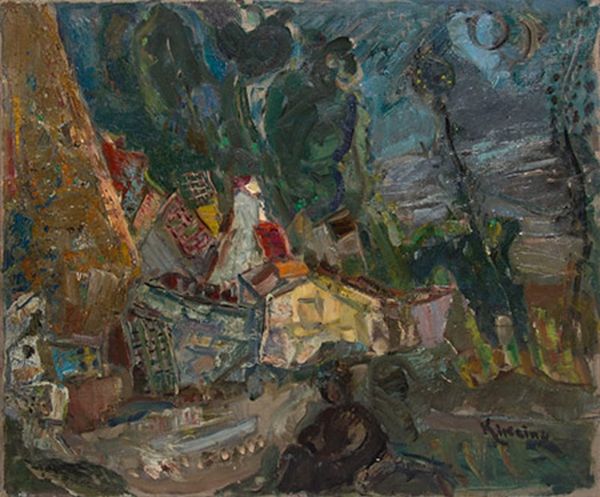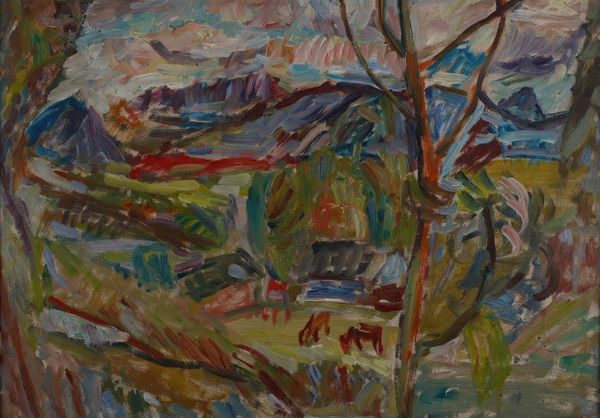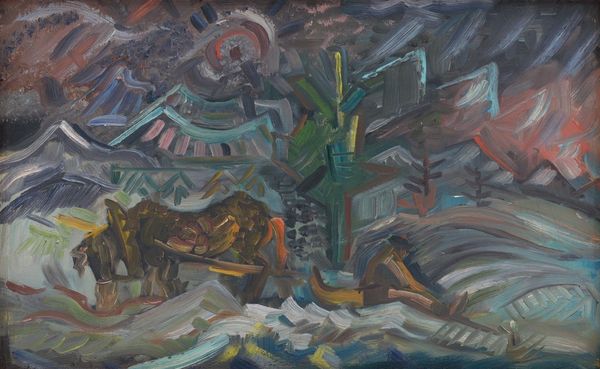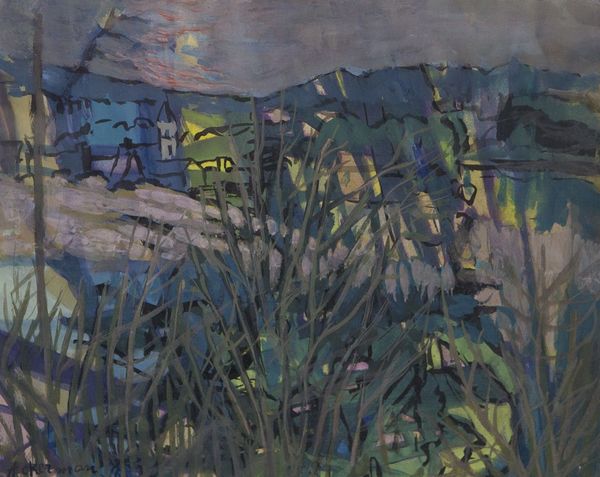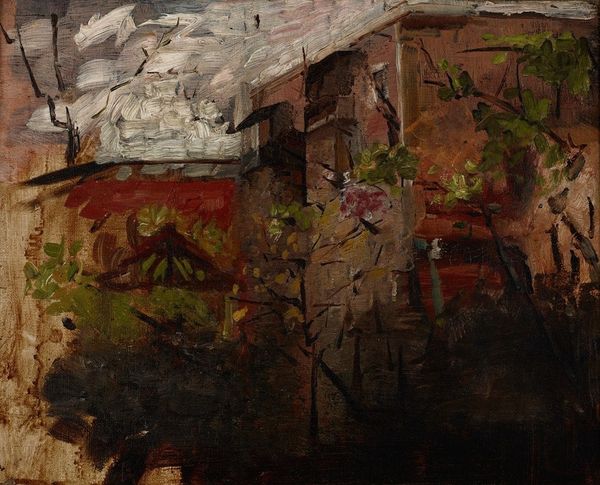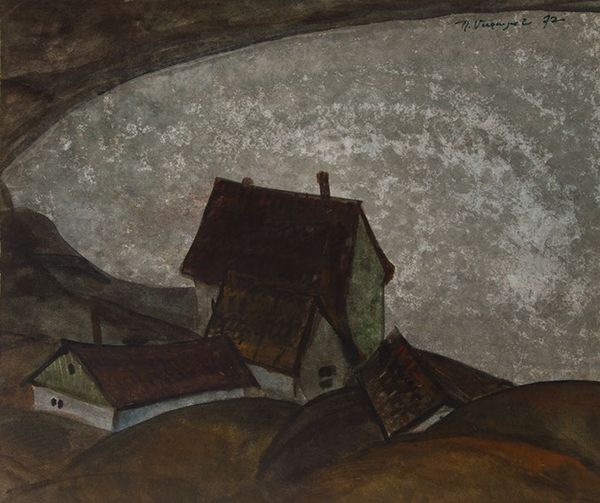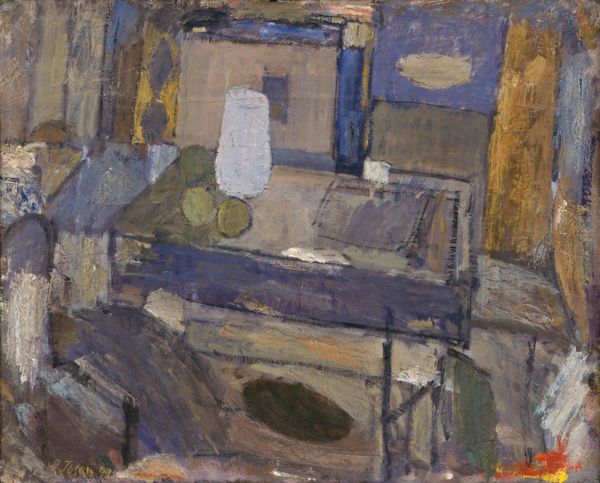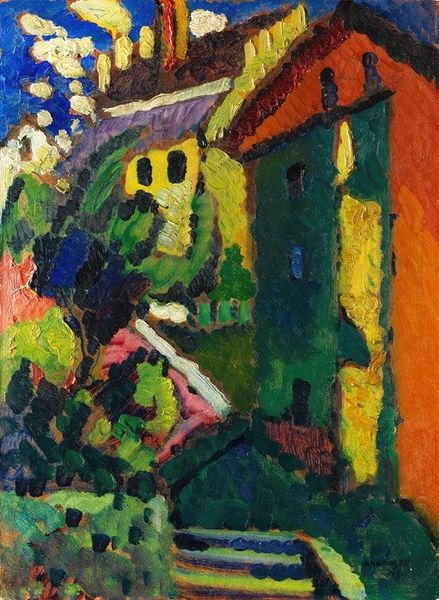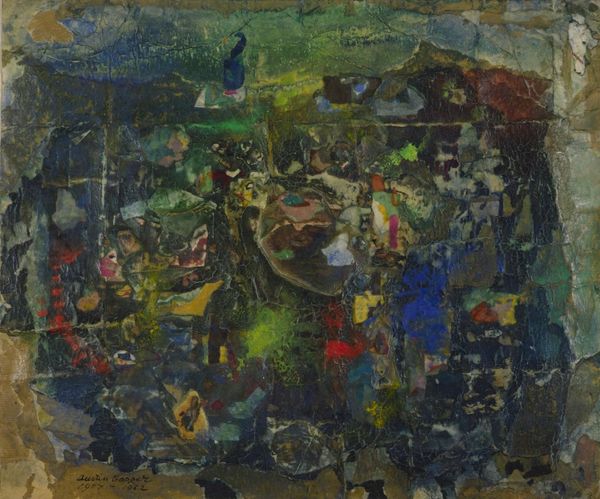
painting, oil-paint, watercolor
#
painting
#
oil-paint
#
landscape
#
painted
#
watercolor
#
expressionism
#
cityscape
Copyright: Public domain
Curator: Before us hangs "Rila Monastery," a work utilizing oil paint and watercolor by Sirak Skitnik. The cityscape is rendered in muted tones. Editor: My immediate impression is one of constraint. There's a palpable tension between the dark, looming foreground, what seems like the trunk of a tree, and the lighter architectural element receding into the distance. It's as if the monastery, both physically and perhaps metaphorically, is struggling to emerge from the shadows. Curator: Interesting take. Skitnik's engagement with landscape here moves beyond mere representation, it engages with national identity. This scene depicts a powerful spiritual symbol central to Bulgarian cultural memory during a period when cultural institutions were viewed as tools to create, revive, and disseminate national ideology and memory, deeply intertwined with the means of art production. The labor invested into painting such scenes for broad dissemination really underlines the social weight of cultural representation. Editor: Absolutely, and how do you interpret Skitnik’s use of color? The heavy blues and greens dominating the foreground, and the rather fainter lighter building in the background. Do you think the relative lightness points to the political and symbolic position of Rila Monastery at the time of production? Curator: The contrasting values are significant. The deliberate placement of the monastery as the focal point in this shadowy tableau is not coincidental. I think Skitnik intentionally leveraged the monastery as a national brand, packaging it to convey tradition. Editor: I’m wondering about Skitnik’s choice to integrate painting and watercolor. Does the medium impact the reception of the art? Perhaps signaling accessibility during politically contentious times. The rough execution adds another dimension, I think. I see less fine art and more social commentary embedded into it. What do you think? Curator: I find it persuasive to interpret Skitnik's media choices as practical and driven by the available tools and materials at that specific time and in the immediate environment, thus connecting the work to accessibility and possibly wider distribution, as well as aligning art production more generally with social and labor practices. The use of accessible materials also gives expressionistic, nationalist messages a greater impact. Editor: So, both are likely true then. Viewing “Rila Monastery” through these varying lenses, one sees how both institutional history and the artistic methods influence its cultural influence. I do wish we had more insights into the year it was produced. Curator: Regardless, appreciating art entails probing production choices and their contextual effects on national cultural memory. Editor: Precisely. A layered viewing experience adds significance, I believe.
Comments
No comments
Be the first to comment and join the conversation on the ultimate creative platform.
